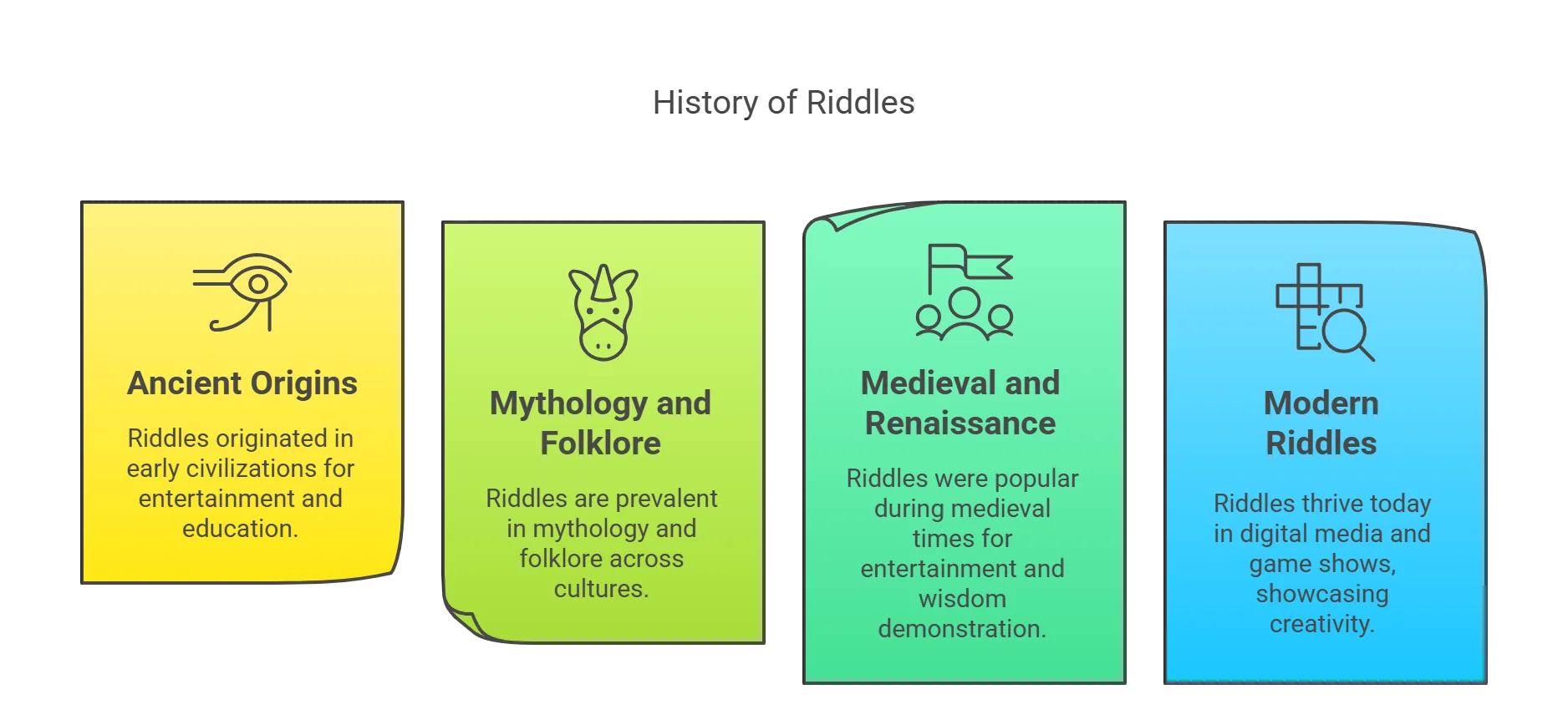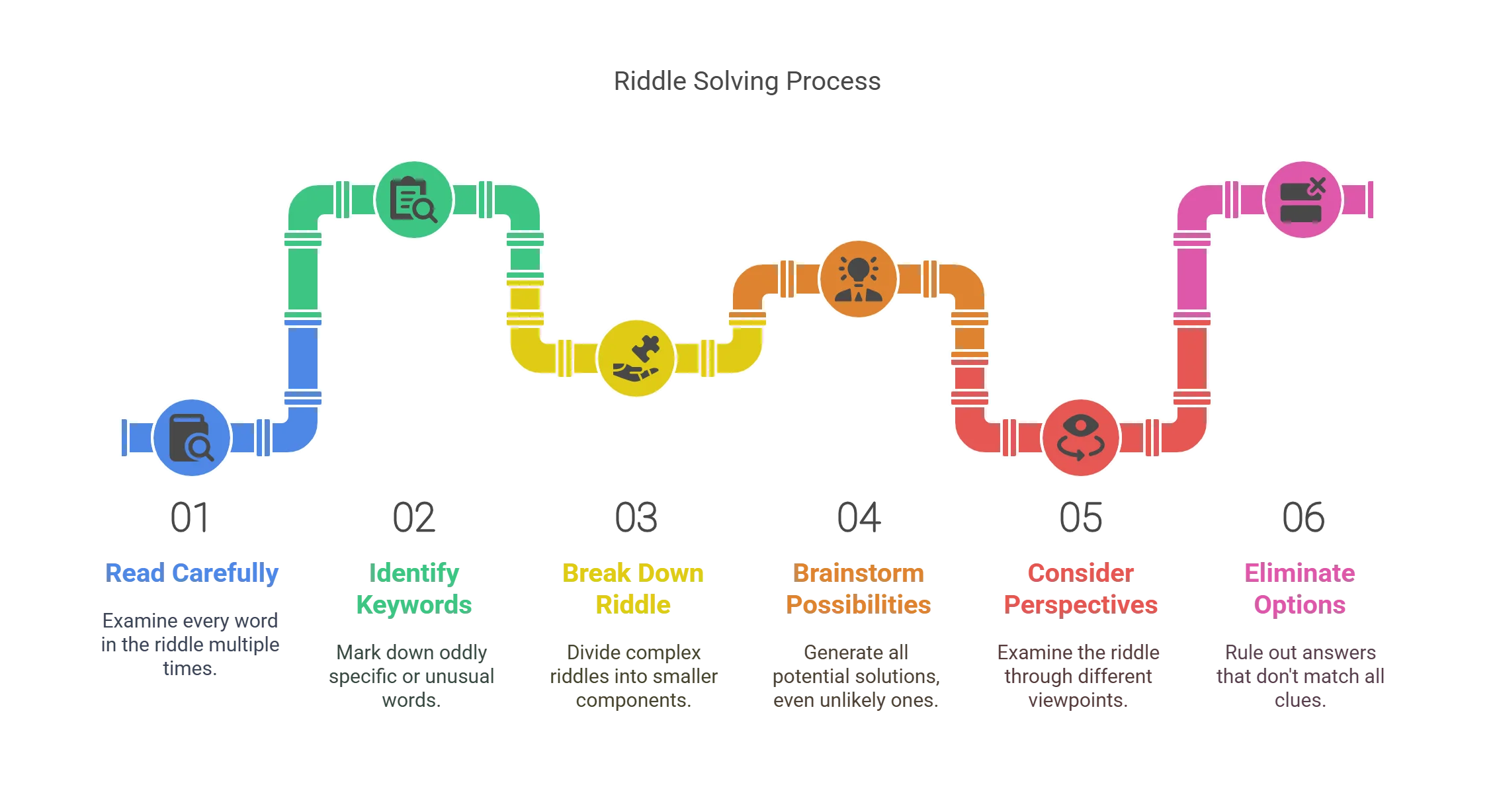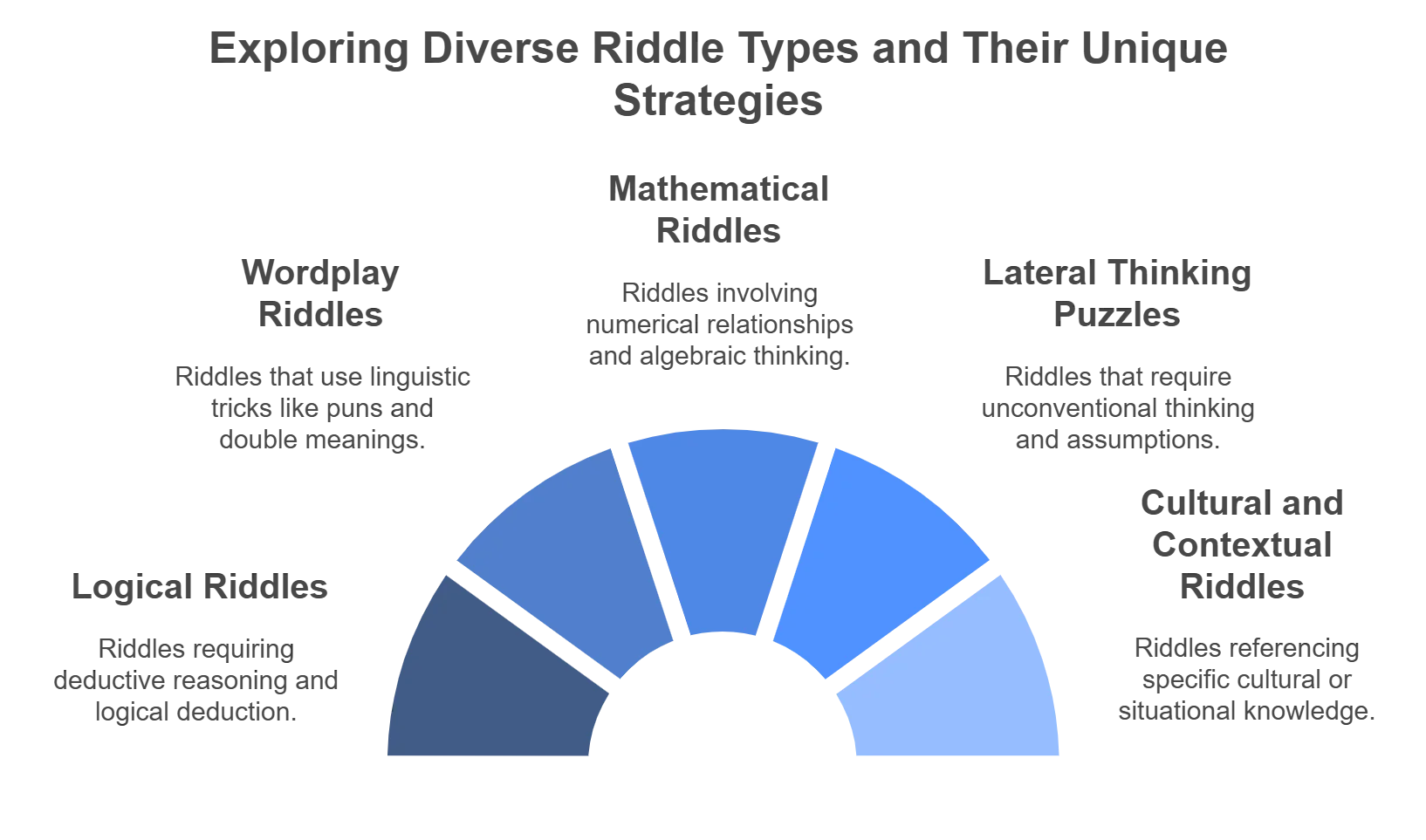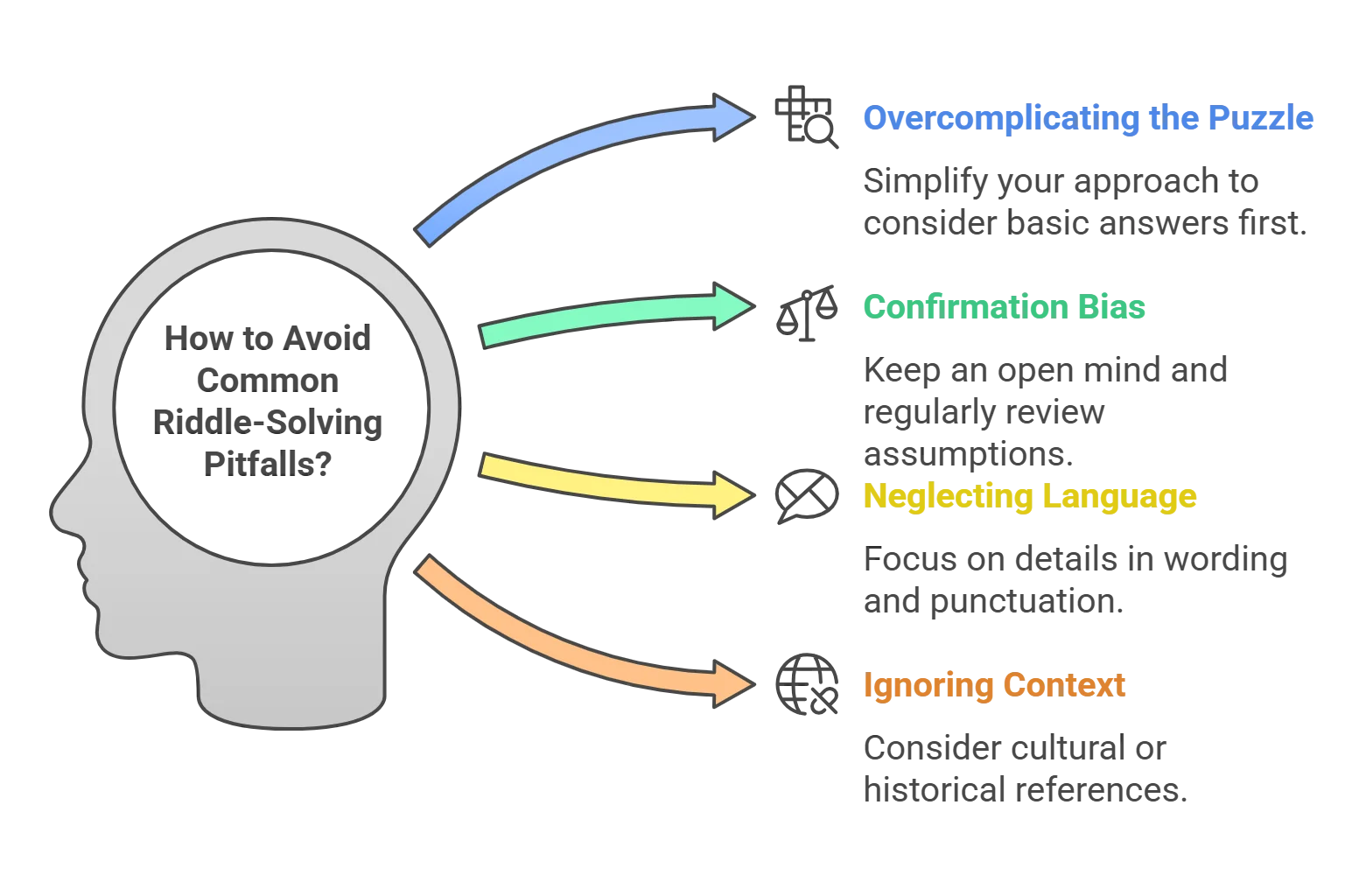Solve riddles to captivate your mind, as these puzzles have since ancient Sumerian times and medieval brain teasers, weaving logic, creativity, and wit into cultural traditions. Today, they’re more than entertainment—they’re a powerhouse for sharpening memory, boosting critical thinking skills, and igniting problem-solving prowess.
This ultimate guide unlocks riddle-solving secrets for all: beginners learning the basics, intermediates overcoming hurdles, and experts mastering lateral thinking exercises. Packed with easy tips, advanced strategies, and real-world brain teaser examples, you’ll crack even the trickiest hardest riddles.
Ultimate Guide to Solve Riddles: Expert Techniques & Strategies (2025)
Ready to master riddles? This resource reveals proven techniques—ideal for solo brain workouts, friendly puzzle showdowns, or critical thinking challenges. Whether you’re solving for fun or sharpening your mental edge, these strategies cater to diverse learning styles, including visual, auditory, and kinesthetic learners. Try practicing with confusing riddles or mysterious riddles for a thrilling challenge.
Who This Guide Is For
- Beginners: Newbies eager to solve their first riddle.
- Intermediate Solvers: Those tackling common stumbling blocks.
- Advanced Puzzlers: Pros conquering complex logic and wordplay.
- Educators: Teachers using riddles as engaging tools, like funny birthday riddles for classroom fun.
- Puzzle Lovers: Anyone hooked on brain teaser thrills.
What Are Riddles and How Do They Work?

Understanding the Basics
Riddles are clever questions or statements hiding answers in subtle clues, often called enigmas or conundrums. They demand pattern recognition, wordplay, and logical deduction—from simple “What am I?” games to intricate brain-busters. Rooted in ancient Sumer and Egypt, they’ve tested wisdom and entertained royalty for millennia. Explore Islamic riddles or Irish riddles for cultural twists.
Why Are Riddles Important?
Beyond fun, riddles enhance cognitive skills like memory and critical thinking. From Oedipus outsmarting the Sphinx to modern escape rooms, they’re timeless mental agility tools, fostering puzzle-solving strategies and mental flexibility. Try Harry Potter riddles for a magical spin.
A Classic Tale: The Sphinx’s Riddle
The Sphinx guarded Thebes with: “What walks on four legs in the morning, two at noon, and three in the evening?” Oedipus cracked it—man—symbolizing life’s stages. This ancient gem from Sphinx riddles shows riddles test wit with stakes!
Why Are Riddles So Hard to Solve? (Psychological Perspective)
Riddles twist language and logic, exploiting brain pattern processing. Mastering this unlocks smarter strategies, especially for those struggling with abstract or cultural riddles like Gollum’s riddles.
How Our Brain Processes Riddles

Your brain uses top-down processing to spot patterns. Riddles disrupt this, sparking cognitive dissonance—tension when assumptions fail. This flexes the prefrontal cortex, boosting adaptability and mental agility exercises.
Why Do I Struggle with Riddles?
- Overcomplicating: Overanalyzing hides simplicity. Tip: Focus on the core question.
- Missing Wordplay: Double meanings trip you up (e.g., “keys” as piano vs. locks). Example: “What has keys but can’t open locks?”—a piano, from clock riddles.
- Ignoring Clues: Subtle phrasing holds answers. Example: “I speak without a mouth…”—an echo.
Pro Tip: Split riddles into chunks, hunt for synonyms (e.g., “bear” vs. “bare”), and think creatively—not just literally. For visual learners, sketch ideas; for auditory learners, read riddles aloud. Practice with riddles about nothing to hone this skill.
How Do You Start Solving Riddles?
Newbie? Relax—it’s simpler than it looks. Read slowly, soak in every word, and don’t rush. Spot clues—like objects or actions—and brainstorm. For kinesthetic learners, write or act out clues to spark insights. Start with best birthday riddles or Disney riddles for accessible fun. Keep it straightforward, check for wordplay, and build confidence step-by-step. Soon, you’ll crave that “aha!” rush!
How to Solve a Puzzle Step by Step: The Riddle Solver’s Toolkit
The Mindset You Need
- Open-Mindedness: Welcome wild ideas.
- Comfort with Ambiguity: Answers emerge slowly.
- Patience: Persistence wins.
Step-by-Step Guide

- Read Twice: Catch every detail.
- Spot Keywords: Highlight odd phrases—they’re gold.
- Break It Down: Simplify complex riddles.
- Brainstorm: List all options, including metaphors or cultural hints.
- Shift Angles: Seek puns or alternative meanings (e.g., “riddles” as enigmas).
- Eliminate: Drop misfits.
- Verify: Match every clue.
Language Tricks: Watch for homonyms and use a notepad for clarity. For auditory learners, verbalize each step to reinforce understanding. Try April Fool riddles to practice spotting tricks.
Types of Riddles and How to Crack Them
Riddles vary—each needs a tailored tactic:

- Logical Riddles: Deduce with grids. Example: “Who’s the liar?” puzzles, like psychopath riddles.
- Wordplay Riddles: Twist words. Example: “What has a head and tail but no body?”—a coin.
- Mathematical Riddles: Spot patterns. Tip: Write equations.
- Lateral Thinking: Defy norms. Tip: Question assumptions. Definition: Lateral thinking involves unconventional approaches to problem-solving.
- Thematic Riddles: Link to topics. Example: “I’m round, kicked, and scored—what am I?”—a soccer ball, from baseball riddles.
More Riddle Types
Cultural riddles, rooted in folklore like Native American stories, test tradition knowledge—e.g., riddles about nature symbolizing life cycles, found in flower riddles. Mathematical riddles challenge with numbers, common in puzzle books. Thematic riddles tie to sports, nature, or food, like ice-cream riddles or horse riddles, making them engaging. These styles broaden your puzzle-solving skills and spark curiosity across subjects. Explore Ramadan riddles or Eid riddles for festive challenges.
Advanced Techniques: How to Solve Difficult Riddles Quickly
For tough nuts:
- Deconstruct: Diagram clue links.
- Reverse Engineer: Test answers backward.
- Simulate: Run scenarios mentally or on paper.
- Spot Patterns: Leverage past riddles.
Complex Example: In the “Three travelers, one question” riddle, ask: “What would the other village say?” Take the opposite path—works every time! Practice with bridge riddles for similar logic. For visual learners, map out scenarios; for kinesthetic learners, use physical tokens to represent clues.
Avoid Pitfalls

Keep it simple, challenge biases, and consider cultural hints (e.g., folklore references in St. Patrick’s Day riddles). For auditory learners, discuss riddles with others to uncover new angles.
Benefits of Solving Riddles for Brain Health
Riddles enhance cognitive flexibility, critical thinking, memory, creativity, and focus. They’re a mental workout that sharpens attention and innovates solutions, keeping your mind razor-sharp. Try army riddles for disciplined thinking or Labor Day riddles for a thematic boost.
What Makes Riddles Fun?
That “aha!” thrill, clever wordplay, and variety—from myths to modern games—make riddles a joyride for your brain. Their diversity, like riddles about rain or autumn riddles, keeps every challenge fresh and engaging.
Practice Riddles for All Levels

Test your skills and share your own riddle below to join our puzzle community! For visual learners, draw riddle clues; for auditory learners, narrate solutions to solidify understanding. Start with Sunday riddles for a relaxed challenge or milestone birthday riddles for celebratory fun.
Resources to Improve Riddle-Solving Skills
- Tools: RiddleWot, BrainBashers for interactive practice.
- Books: Lateral Thinking Puzzles by Paul Sloane for advanced strategies.
- Communities: r/riddles on Reddit for peer learning.
Interactive Tip: Try an online riddle quiz to track progress and boost engagement, or explore zodiac birthday riddles for a cosmic twist.
Conclusion
Riddles sharpen your mind and ignite joy. With history, types, benefits, and pro tips, this guide equips you to conquer any puzzle. Practice, play, and stump us with your own riddle below! Download our free Riddle Solver’s Cheat Sheet—10 must-know techniques—for quick reference.
Frequently Asked Question (FAQs)
How Did Feyre Solve the Riddle?
In A Court of Thorns and Roses, Feyre solved a tricky riddle by looking beyond the obvious, showing smarts under pressure. Try surprise party riddles for similar cleverness.
Is There an AI That Can Solve Riddles?
Yes, AI like ChatGPT, Grok, or Claude can tackle riddles with logic and language, but abstract or cultural riddles, like death riddles, may stump them. You can also use our riddle generator and riddle solver to solve riddles.
What’s the Best Way to Solve Riddles?
Think creatively, analyze clues step-by-step, and practice spotting wordplay. Start with our cheat sheet or modern birthday riddles!
What Are the Easiest Riddles for Kids?
Simple “What am I?” riddles, like “I’m yellow and shine in the sky” (sun), are great for young solvers. Check out car riddles for kid-friendly fun.
How Do Riddles Improve Brain Function?
They boost memory, critical thinking, and cognitive flexibility, acting as mental agility exercises.